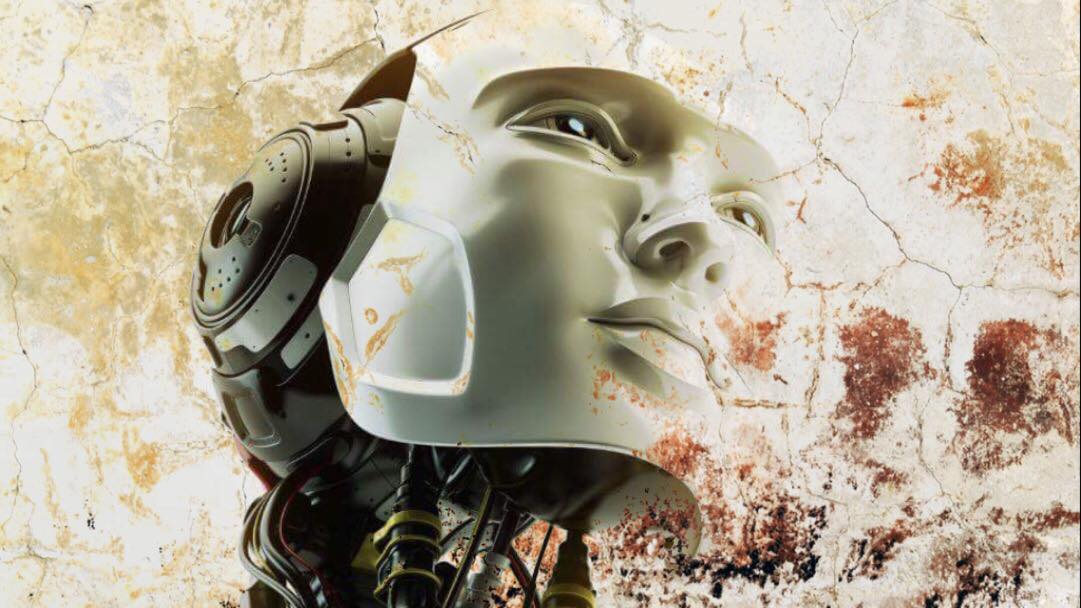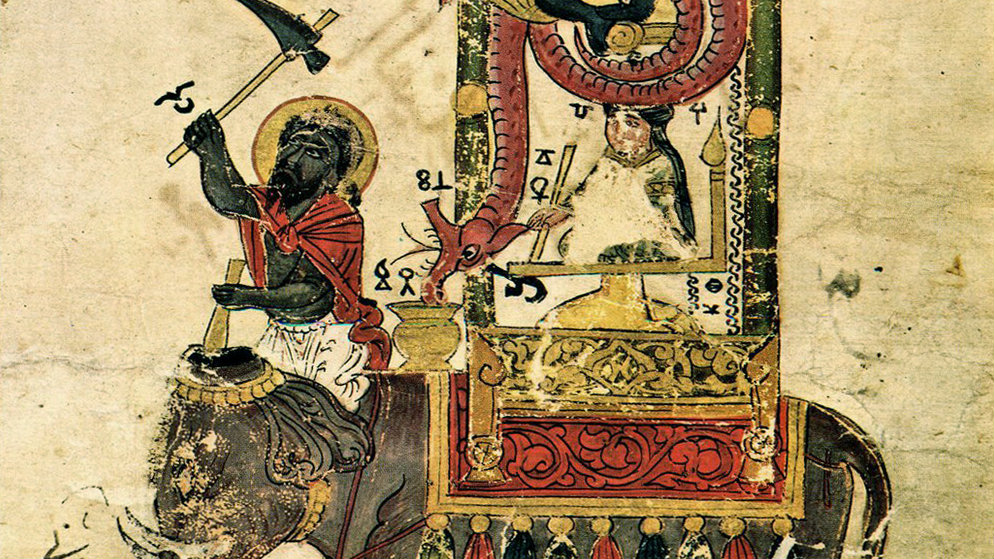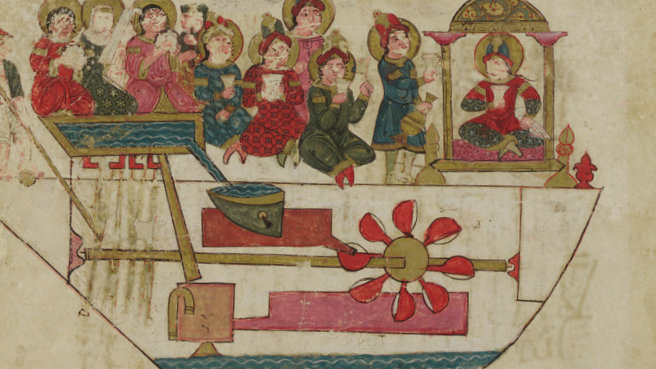The forgotten history of the 800-year-old robot
There’s nothing new about robotics

From the Maschinenmensch in Fritz Lang’s Metropolis, to C3P0, the Terminator, and Wall-E, fictional robots have delighted, horrified, and fascinated humans for more than a century, cropping up in everything from 19th century literature to the horror B-movies of the 1950s.
Robots began to enter the Western world’s collective consciousness as a result of the mechanization of manufacturing during the Industrial Revolution, as people looked to machines to take on the menial work of their ancestors.
Based on the Czech ‘robota’, meaning servitude, the word ‘robot’ was first used by Czech writer Karel Capek in his 1921 play R.U.R (Rossum’s Universal Robots), with autonomous and semi-autonomous machines referred to as ‘automata’ up until this point.
Capek’s groundbreaking play sees a servant class of robots rebel against their human masters, leading to the extinction of the human race. Immensely popular at the time, R.U.R shed a dystopian light on robotics, contributing to an emerging fear that androids could one day advance beyond their creators that’s just as prevalent today, with increasingly intelligent automata surprising us with their capabilities, and making us question what it really means to be human.
We now live in a world where robots are programmed to help us with chores, entertain us, provide companionship, and even care for us in our old age; but while robotics is often considered a relatively new field of science and technology, it actually has its roots in the ancient world, with a history spanning more than 1,000 years.

The Islamic Golden Age
The notion of bronze statues and clay figurines coming to life dates as far back as prehistoric Norse folklore, but the idea of mechanical servants and companions arose from ancient scholars, including Islamic inventor Ismail al-Jazari, who lived during the Artuqid dynasty in the 12th and 13th centuries.
Born in 1136 in what is now modern-day Turkey, al-Jazari was a polymath, excelling at a variety of disciplines including mathematics, art, mechanics, and inventing.He was one of many brilliant scholars to to emerge during the ‘Islamic Golden Age’, the period between the 8th and 14th centuries in which the Islamic world flourished culturally, economically, politically and scientifically. By contrast, Europe was mired in the Dark Ages around the beginning of this period, following the fall of the Roman Empire.
Sign up for breaking news, reviews, opinion, top tech deals, and more.
It was the perfect environment for al-Jazari to produce, in 1206, what is now considered his most important work, The Book of Ingenious Mechanical Devices, in which he outlined 100 devices, with instructions on how to build them.
Perhaps the most important invention in this book is his boat of mechanical musicians, which is sometimes referred to as the world’s first programmable robot. Designed to entertain guests at royal drinking parties, the device comprised a boat containing four musicians that were powered by a clever hydraulic design.
Speaking to TechRadar, Professor Noel Sharkey, computer scientist and head judge on BBC 2’s Robot Wars, believes it was al-Jazari’s most important invention “from the perspective of robotics”, and described it as “the most advanced use of water power to animate figures with detailed articulation of the arm joints” at the time.

Turning on the waterworks
Although the use of hydraulics dates back to Mesopotamia and Ancient Egypt, Sharkey explains that “one of [al-Jazari’s] great innovations was in how he powered his boat over a relatively long period of time”.
Explaining the mechanism, he says: “There was an onboard reservoir of water that was used to fill a large tipping bucket -this took around 30 minutes. The bucket then tipped a stream of water over a water wheel that rotated a shaft, which both moved the boat and the automata musicians on board. The boat then rested while the bucket refilled and then the process repeated itself until the reservoir of water was used up.”
So why are the mechanical musicians referred to as the world’s first programmable robot? The answer lies in the two little percussionists onboard the boat. Sharkey continues: “I originally argued that the boat of musicians was a candidate for the first programmable robot or automaton following claims by Mark Rosheim that Leonardo da Vinci [created] the first programmable robot/automata in the 15th century.
“Beneath the ‘drummer’ was a rotating shaft (powered by falling water) with pegs on it. As these pegs rotated they pull on a lever that raised the drummers arm and then it dropped to hit the drum. The rhythm and timing of the drum beats was entirely controlled by the placement of the pegs. So to fine tune the rhythm all that was needed was to drill holes all the way round the shaft so that the pegs could be placed in different positions.”
"Al-Jazari brought a new level of sophistication to automata."
Professor Noel Sharkey
The father of robotics?
As al-Jazari left such detailed instructions, Sharkey was able to recreate the mechanism, demonstrating how the movable pegs allowed the robot to be ‘programmed’. He also added an Irish whistle “just for fun”.
Although Sharkey believes that al-Jazari’s work was important to the development of mechanics, and indirectly, the development of modern robotics, he’s not convinced that he should be called ‘the father of robotics’.
“I think that title should go to a much earlier automata maker from ancient Alexandria called Heron,” he says. “Al-Jazari followed on from a long tradition of automata makers from ancient times and then a strong Islamic tradition. The most notable influence was the 9th century book on water automata by the Islamic automata makers Banu Musa. Al-Jazari also had access to Arabic translation of books by the ancient Greek engineers Philo and Heron, however, al-Jazari brought a new level of sophistication to automata with large-scale and more ambitious works.”
Sharkey, who is also the co-director of the Foundation for Responsible Robotics, has spent most of his life researching robotics and artificial intelligence, has come to the conclusion that al-Jazari’s mechanical musicians may not even be the earliest example of a programmable robot.
He describes a “mobile robot/automata theatre, made by Heron of Alexandria around 60 AD”, although he acknowledges that al-Jazari “clearly made a leap forward in the articulation of human like figures that eventually led to the 19th century clockwork automata which was continued into the early 20th century electric robots like Willy Televox and Electro”.
Despite his contributions to modern robotics, al-Jazari is perhaps not the household name he should be, perhaps due to a generally Christian-centric and Western-centric approach to teaching history in schools.
At this point in time, it’s not yet clear to what extent robots will infiltrate our daily lives in the next few years, but with robotics predating electricity, the printing press, and even eyeglasses, it’s clear is that humanity has been fascinated with automata for far longer than most would imagine.

Olivia was previously TechRadar's Senior Editor - Home Entertainment, covering everything from headphones to TVs. Based in London, she's a popular music graduate who worked in the music industry before finding her calling in journalism. She's previously been interviewed on BBC Radio 5 Live on the subject of multi-room audio, chaired panel discussions on diversity in music festival lineups, and her bylines include T3, Stereoboard, What to Watch, Top Ten Reviews, Creative Bloq, and Croco Magazine. Olivia now has a career in PR.